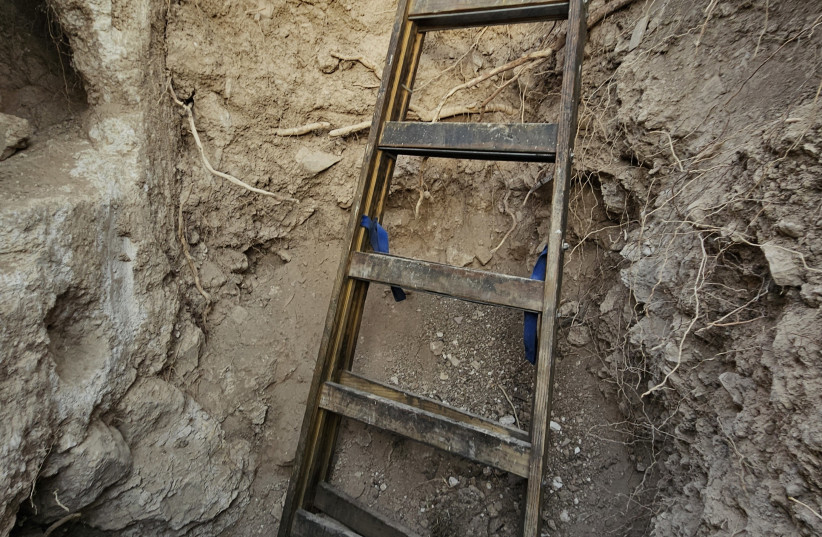Five individuals were caught in the act of robbing an archeological site in northern Israel on Friday, according to a report from the Israel Antiquities Authority (IAA).
Members of the IAA Robbery Prevention Unit, in conjunction with local police, conducted an extended operation in response to robberies occurring in archeological sites near the village of Ein Mahal.
The site in question contained artifacts that are approximately 2,000 years old, dating back to the Roman-Byzantine era, according to the IAA.
"We recently noticed archeological robberies taking place around the village of Ein Mahal," explained IAA Robbery Prevention Northern Unit head Nir Distelfeld. "From that moment, we began an operation [which lasted] until we caught the robbers. The operation lasted about three weeks, until last Friday when we decided to carry out a proactive mission to catch the robbers. We ambushed them, and as soon as we were sure they had begun digging, I called for backup from Northern District Police. Together, we caught them red-handed."
The robbers were caught at the "Einat Shu'im" excavation site. The place held a water source and once was home to a large town of people. Researchers have identified prehistoric artifacts at the site, as well as some that trace back as recently as the Ottoman period. The region's heyday, when it had the most residents and activity, was in the Roman-Byzantine periods.
The site is home to a branching series of caves, likely related to the Jewish revolts against the Romans during that period. "Fortunately, the caves...were not damaged in the recent robbery incidents," said Distelfeld.
The suspects were detained for further investigation.
"Next to the cave were tools that the robbers planned to use - sledgehammers, hammers, quarrying tools and metal detectors," according to Distelfeld. "In front of the cave, you can see medium-sized ancient quarrying. These were, apparently, storage cells. It is possible that the captured suspects had time to "clean" the cells ... No antiquities were found in the search of the suspects, but the matter is under investigation."
Past incidents of attempted antiquities theft
In November, a similar operation occurred near Rahat in southern Israel which caught three antiquities robbers in the act of stealing.
It is suspected that the robbers were looking for hidden treasure that, according to a legend circulating in the South, is buried in a well inside a cave.
“It is important that the public know that the rumor about the presence of treasure in the South has no archaeological or historical basis,” said Amir Ganor, director of the authority’s Robbery Prevention Unit. “Of course, no treasure has been found so far, but the archaeological sites have been irreparably damaged.”

